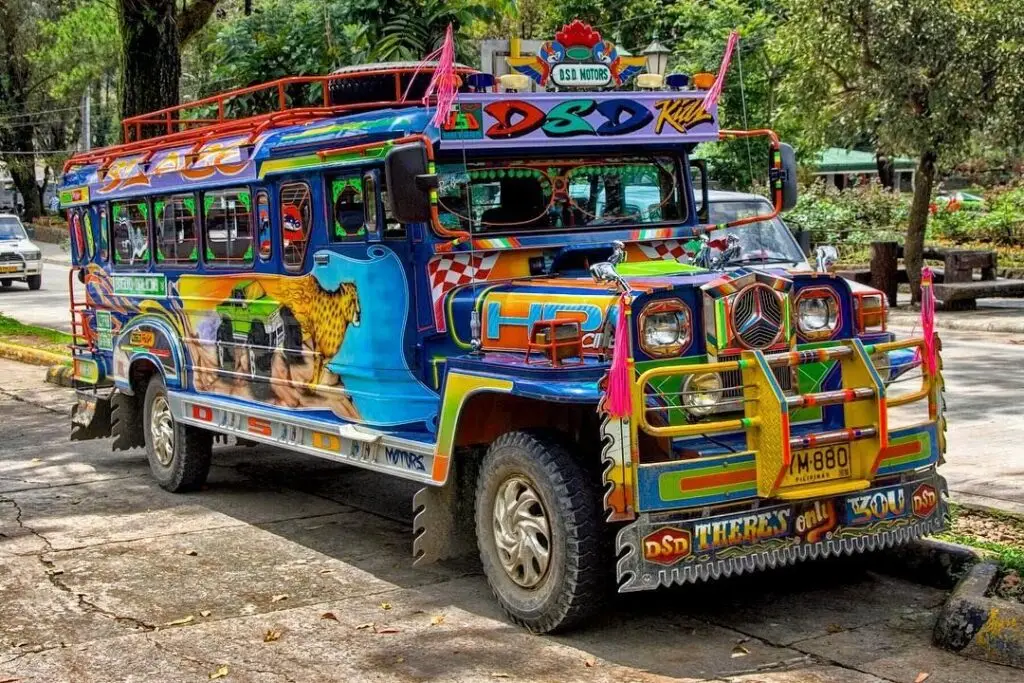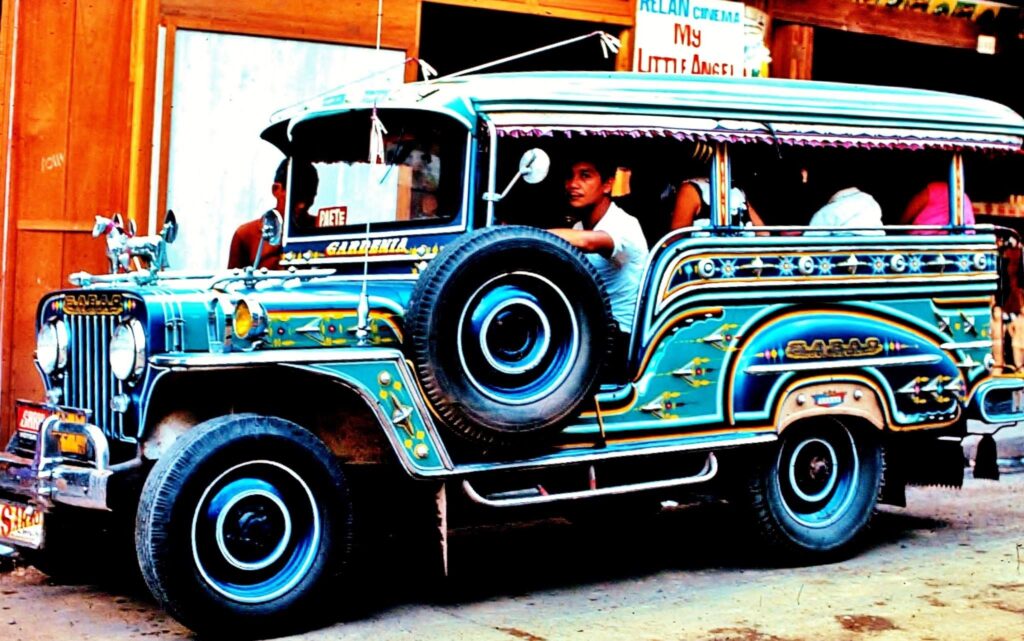Share:
Explore More Topics
The Jeepney

The streets of the Philippines come alive with a unique form of transportation, the Jeepney. This vehicle captures the essence of Filipino ingenuity and creativity – the jeepney. These vibrant, eye-catching vehicles are more than just a means of getting from point A to point B; they’re a rolling testament to Filipino culture and history.
Origins of the Jeepney
The jeepney’s story begins in the aftermath of World War II. As American troops departed the Philippines, they left behind surplus Willys Jeeps. Faced with a decimated transportation system, resourceful Filipinos saw an opportunity. They extended the jeeps’ bodies, added roofs for shade, and installed parallel benches in the back to accommodate more passengers. Thus, the jeepney was born – a creative solution to the country’s pressing transportation needs.

A Canvas on Wheels
What truly sets jeepneys apart is their flamboyant appearance. Each vehicle is a unique work of art, reflecting its owner’s personality and artistic vision.
Jeepneys are adorned with:
- Vibrant paint jobs in every color imaginable
- Hand-painted murals featuring everything from religious icons to pop culture figures
- Chrome accents and decorative lights
- Colorful plastic or metal ornaments
This riot of color and decoration has earned jeepneys the nickname “Kings of the Road” in the Philippines.
The Jeepney Experience
Riding a jeepney is an adventure in itself. Here’s what you can expect:
- Seating: Two long benches face each other in the back, typically accommodating 16-20 passengers.
- Boarding: Passengers climb in through the open rear of the vehicle.
- Payment: Fares are passed hand-to-hand to the driver, often with passengers helping to make change.
- Signaling: To stop, passengers say “para” (“stop”) or tap a coin on the metal roof.
The close quarters and shared experience often lead to impromptu conversations and a sense of community among passengers.
Challenges and Evolution
While jeepneys remain an integral part of Filipino culture, they face modern challenges. Concerns about emissions and safety have led to government-backed modernization efforts.
New models featuring:
- Euro 4-compliant or electric engines
- Air conditioning
- Wi-Fi capabilities
These updates aim to preserve the jeepney’s cultural significance while addressing environmental and safety concerns.
More Than Just Transportation
The jeepney represents the Filipino spirit of resilience, creativity, and community. It’s a symbol of how Filipinos can take something discarded and transform it into something uniquely their own. For visitors to the Philippines, a jeepney ride offers more than just transportation – it’s a chance to experience a piece of living Filipino culture. Whether you’re navigating the bustling streets of Manila or exploring a rural province, keep an eye out for these rolling works of art. A jeepney ride is sure to be a memorable part of any Philippine adventure.
